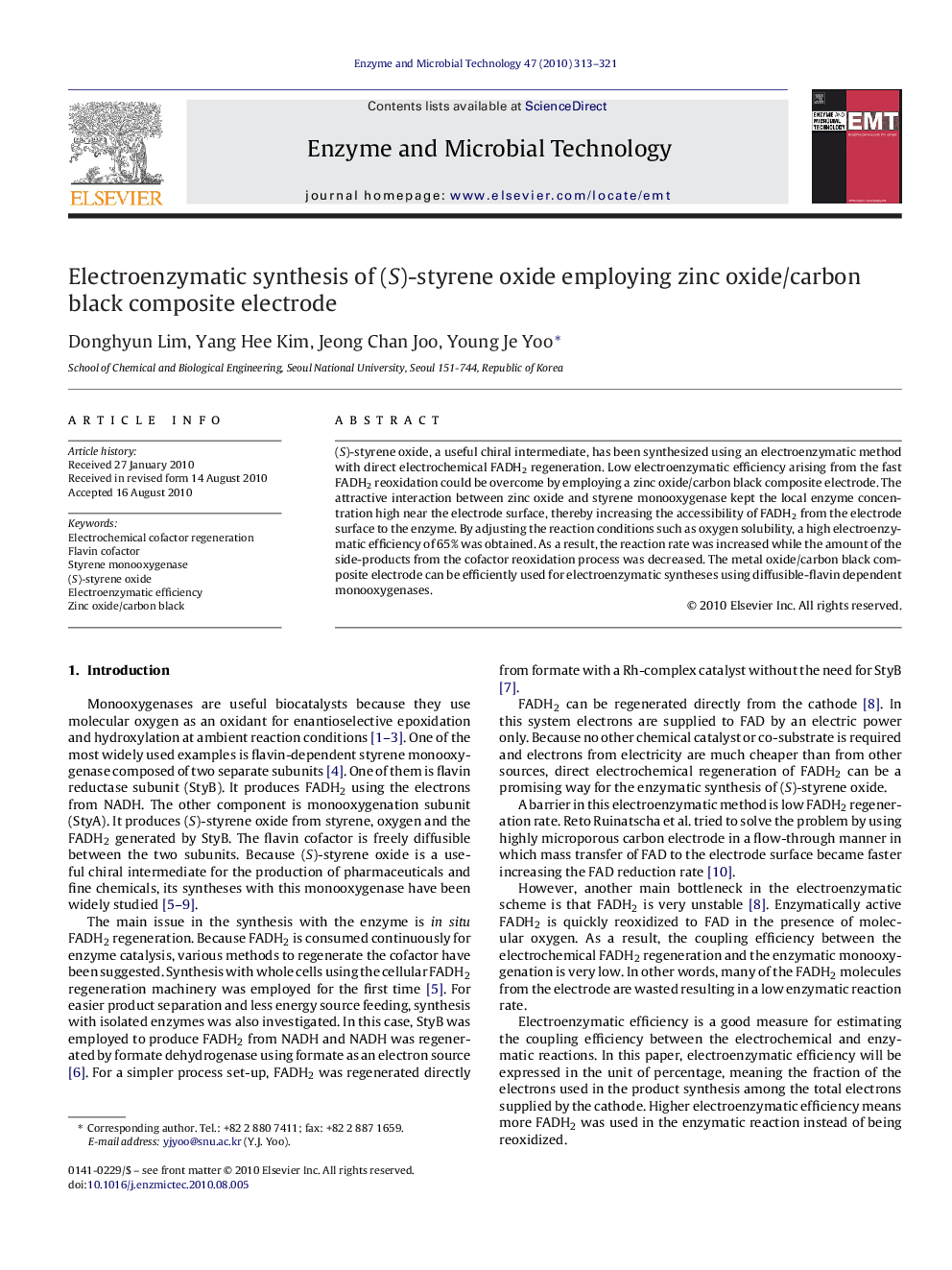| Article ID | Journal | Published Year | Pages | File Type |
|---|---|---|---|---|
| 17524 | Enzyme and Microbial Technology | 2010 | 9 Pages |
(S)-styrene oxide, a useful chiral intermediate, has been synthesized using an electroenzymatic method with direct electrochemical FADH2 regeneration. Low electroenzymatic efficiency arising from the fast FADH2 reoxidation could be overcome by employing a zinc oxide/carbon black composite electrode. The attractive interaction between zinc oxide and styrene monooxygenase kept the local enzyme concentration high near the electrode surface, thereby increasing the accessibility of FADH2 from the electrode surface to the enzyme. By adjusting the reaction conditions such as oxygen solubility, a high electroenzymatic efficiency of 65% was obtained. As a result, the reaction rate was increased while the amount of the side-products from the cofactor reoxidation process was decreased. The metal oxide/carbon black composite electrode can be efficiently used for electroenzymatic syntheses using diffusible-flavin dependent monooxygenases.
